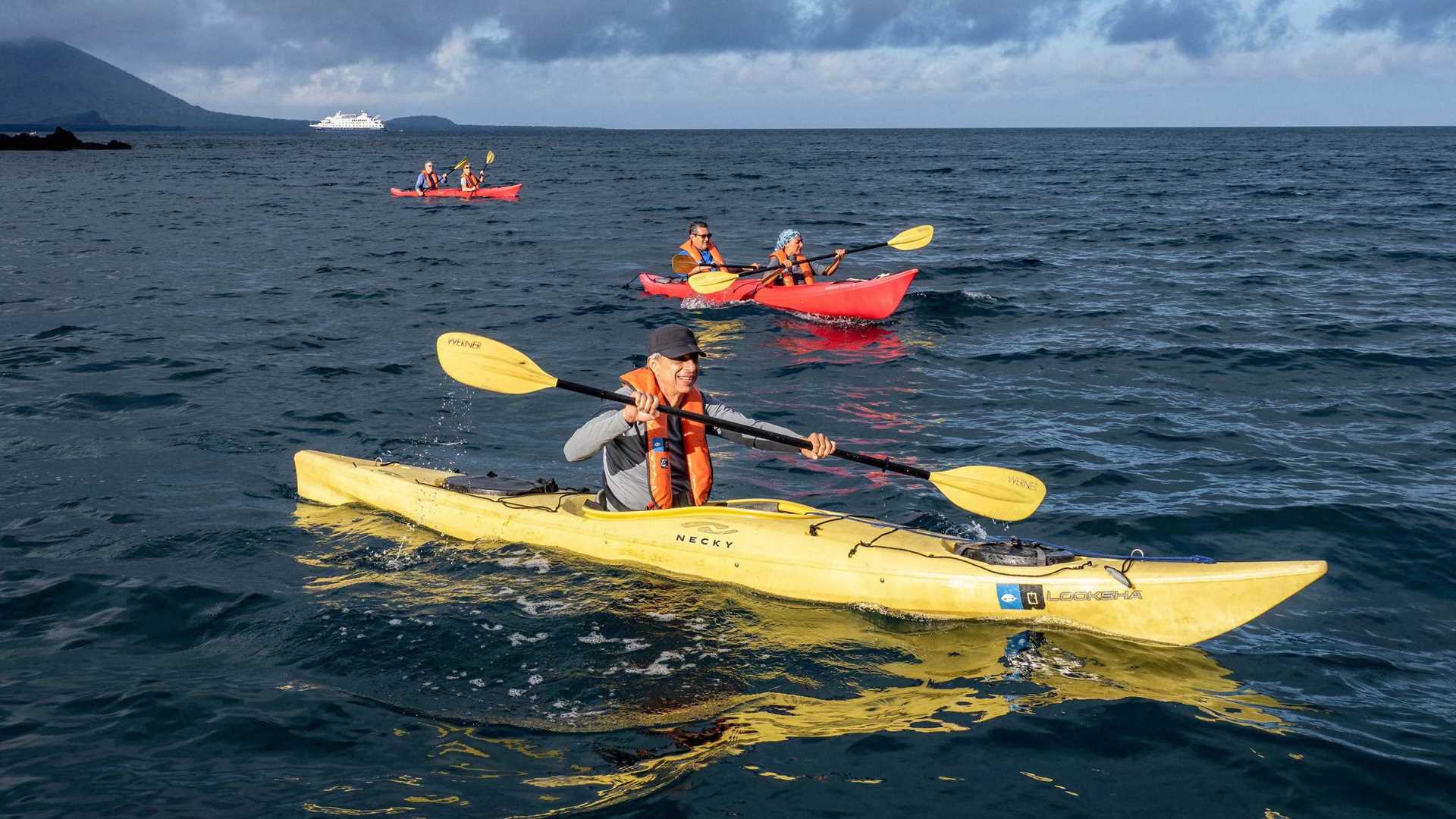Travel to the Galápagos is on! Here are some things you might be wondering if you're considering a trip to the world's most interesting islands. Get Inspired By Photos, Videos, Webinars, Stories, And Exclusive Offers. Sign Up
Where Exactly Are the Galápagos Islands?
These legendary islands are located 600 miles away from the Ecuadorian coastline (the closest land mass). It's one of the world's most isolated oceanic archipelagos. Sheltered from civilization, all that remoteness allowed Galápagos to evolve into the spectacular world that's been studied and celebrated since the days of Darwin. The archipelago is 97% natural park and all but four of the islands are uninhabited—no people, just strange and beautiful creatures roaming free, going about their daily lives in this wild habitat.
Can You Travel to the Galápagos Islands?
Yes! With travel restrictions starting to lift around the globe, it’s hard to keep track of what destinations are currently accepting travelers. Ecuador was actually one of the very first countries to open—they’ve been welcoming travelers to the mainland since June 2020 and to the Galápagos since August 2020. Since tourism makes up 85% of the economy in Galápagos, the new president of Ecuador and the Minister of Tourism have made recovery top priority. Virtually 100% of everyone in Galápagos age 12 and over has been vaccinated. (That, of course, includes all of our staff and crew.) It will be the second in the world after Capri to be fully vaccinated. Ecuador also continues a robust vaccination program with 72.5 percent of the population over age 16 vaccinated as of September 1, 2021.
When’s the Best Time to Travel to the Galápagos?
This is one of our favorite questions to answer because the best time to visit the Galápagos is—ANYTIME! There are always fascinating behaviors to observe: from giant tortoises languidly grazing in the Highlands to marine iguanas sneezing out salt. You never know what surprising encounters can happen in the islands. And this summer was an especially exciting time to visit. Daily reports that came back from our first few voyages were a joy to read. A return to pure nature—unfettered wildlife, pristine ocean, colorful sand beaches, wide-open spaces—is clearly just what the doctor ordered after this unprecedented year.
What Are Accommodations Like On Land?
We’ve made getting to the islands as easy as possible. In Guayaquil, guests will be staying in hotels from the elegant Oro Verde Group—the Hotel del Parque, which is nestled in the serene Parque Histórico, or a new hotel for us this year, the plush Oro Verde Guayaquil. Guests arrive from international flights late at night and will be comfortably accommodated on a floor exclusively for Lindblad Expeditions-National Geographic, limiting contact and adhering to protocol at all times. Enjoy a private breakfast in the morning before a private transfer to the airport. Luggage goes from the hotel in Guayaquil straight to your cabin on the ship—no need to check in bags. Our group will stay together to board the flight.
How Has the Travel Experience Changed?
If anything, our signature Galápagos expedition experience is more elevated than before. We’re operating with smaller groups and a smaller staff to guest ratio: 1 naturalist to every 8-10 guests in the Zodiacs and ashore. That means more personal attention and a more intimate experience. We’ve also added some new opportunities like an enhanced experience in the Highlands of Santa Cruz. Here, you’ll have extra time in the wild to be surrounded by native vegetation and the island’s iconic giant tortoises.
Aboard ship things are also better than ever. The brass is polished, the wood is gleaming, the carpets are shampooed, the ships are all shined up and ready to welcome back guests. And after more than 15 months, our staff and crew are thrilled to be back doing what they do best—creating an unforgettable experience for you. Come see for yourself!
Have more questions? Browse our Galápagos itineraries or call 1-800-EXPEDITIONS and speak to an Expedition Specialist.




